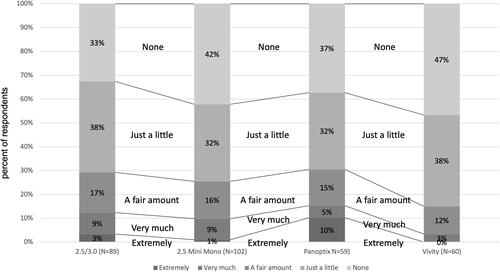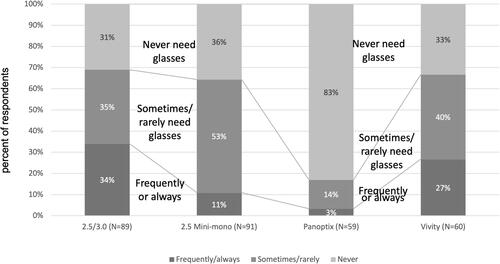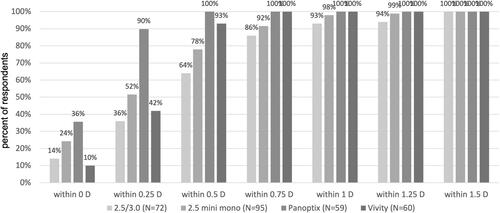Figures & data

Table 1 Demographics
Figure 1 Responses to the question, “How much do you notice glare or halos around lights in dim light situation?” suggest that patients implanted with Vivity IOLs were significantly less likely to notice glare and halos more than “just a little” and significantly more likely not to notice these symptoms at all compared to all other IOL cohorts. (p<0.02 vs Panoptix, p<0.03 vs 2.5/3.0 and 2.5 mini-mono, Chi squared test).

Table 2 Patient-Reported Spectacle Dependence (Response to the Question, “Do You Ever Need to Use Spectacles for the Following Activities?”)



